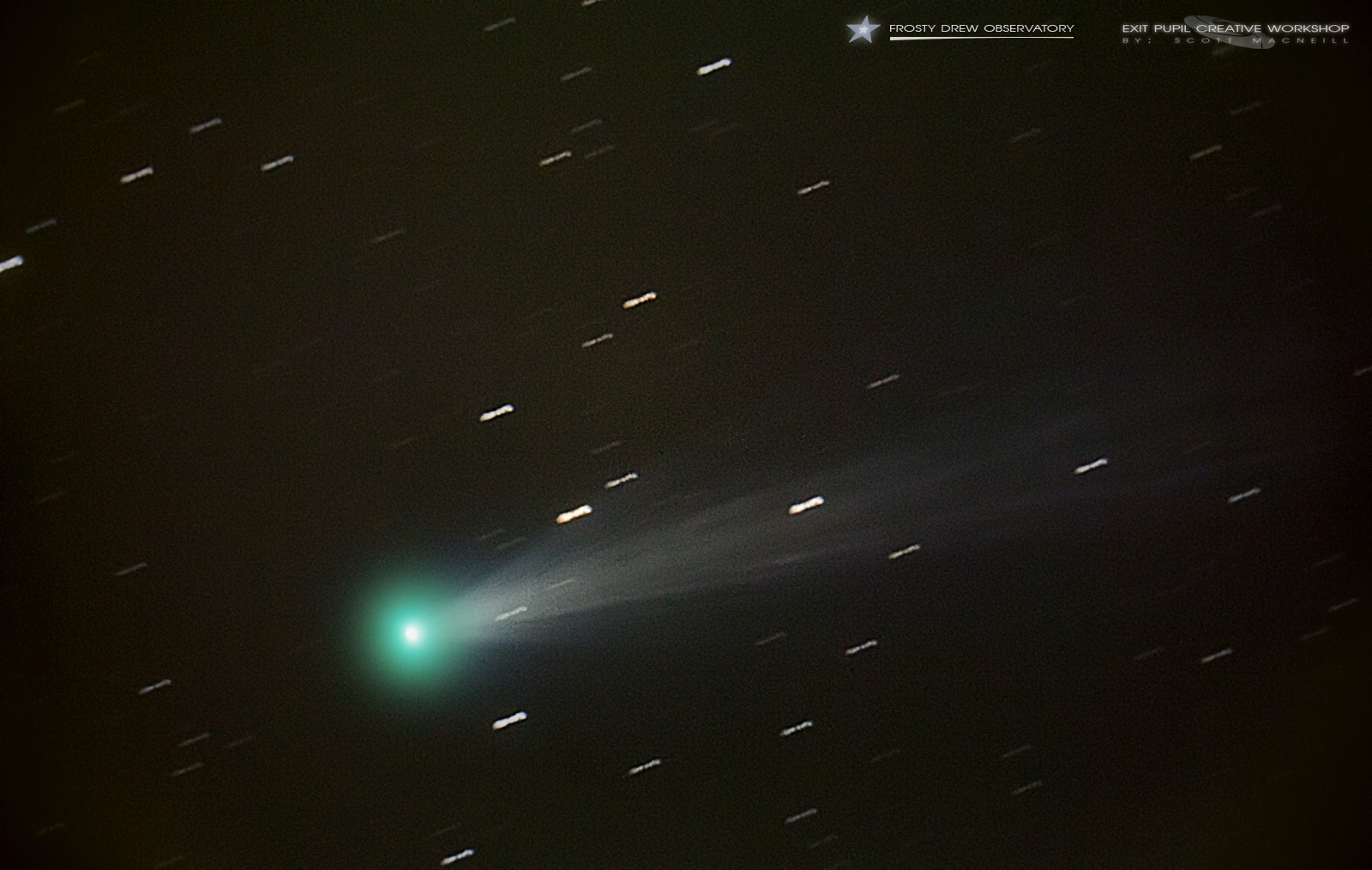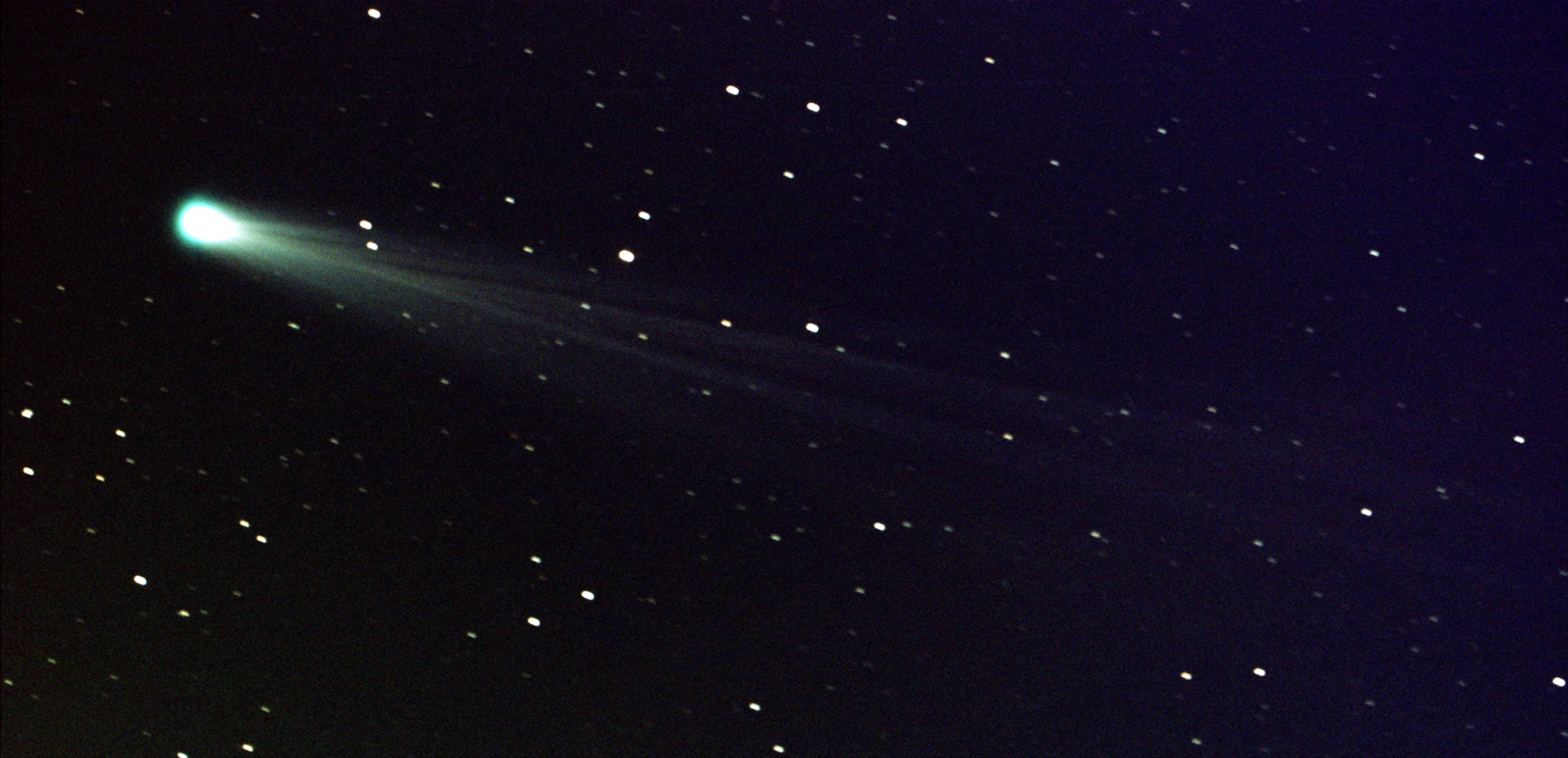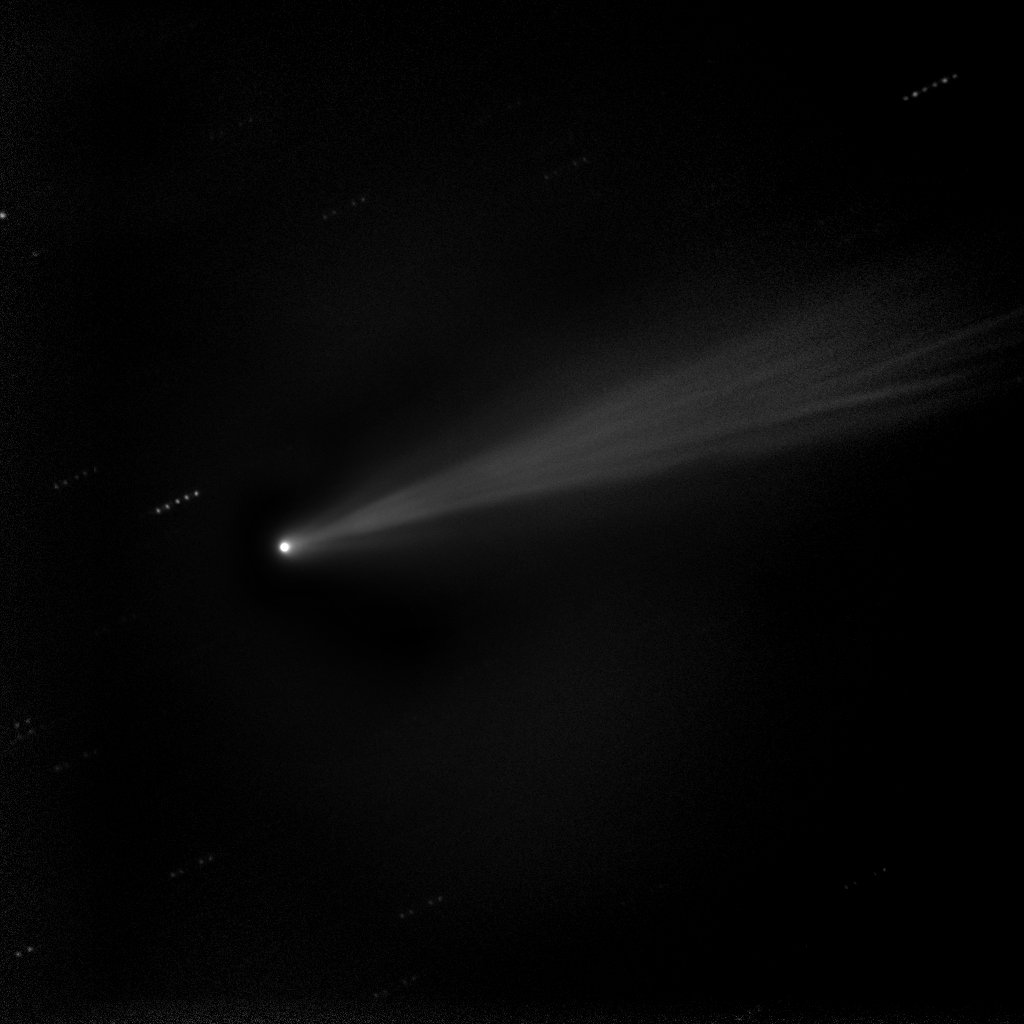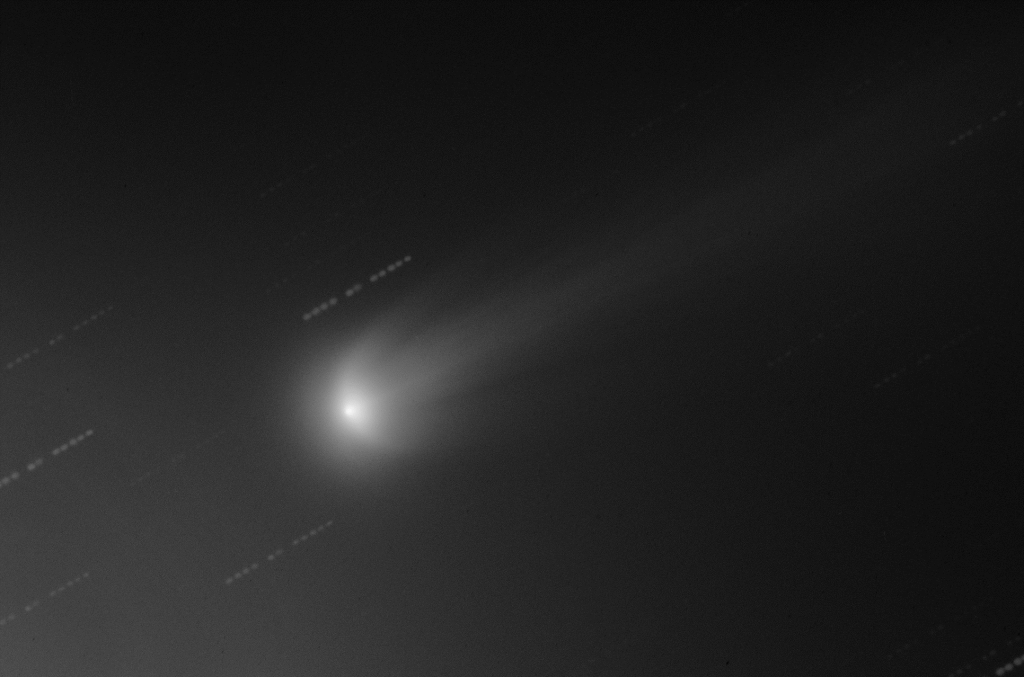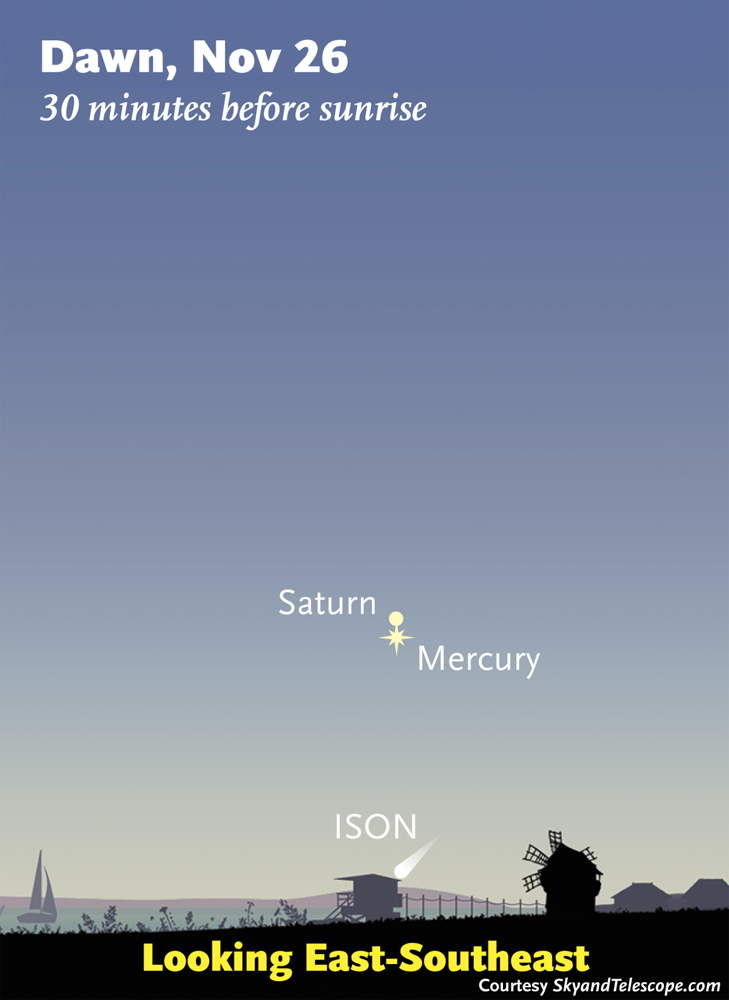Photos of Comet ISON: A Potentially Great Comet
Comet ISON on Nov. 15 by Scott MacNeill
Scott MacNeill sent SPACE.com this image of Comet C/2012 S1 ISON taken from Frosty Drew Observatory in Charlestown, R.I. on Nov. 15, 2013. “I had a short window to shoot as clouds and haze were moving in fast. Comet ISON was barely naked-eye visible using averted vision, but spectacular in binoculars,” MacNeill wrote SPACE.com in an email. “When searching the field with binoculars I overlooked ISON at first mistaking it for a star.”
Comet ISON Soars Toward the Sun
Comet ISON shows off its tail in this three-minute exposure taken on Nov. 19, 2013 at 6:10 a.m. EST, using a 14-inch telescope located at the Marshall Space Flight Center. [Read the Story Behind This Photo Here]
Bright Comet ISON on Nov. 19
Comet ISON shines brightly in this image taken on the morning of Nov. 19, 2013. This is a 10-second exposure taken with the Marshall Space Flight Center 20" telescope in New Mexico. The camera there is black and white, but the smaller field of view allows for a better "zoom in" on the comet's coma, which is essentially the head of the comet.
Comet ISON Enhanced
Taken on Nov. 19, 2013, this image shows a composite "stacked" image of comet ISON. These five stacked images of 10 seconds each were taken with the 20" Marshall Space Flight Center telescope in New Mexico. This technique allows the comet's sweeping tail to emerge with more detail.
Comet ISON Seen by TRAPPIST Telescope at La Silla Observatory
This new view of Comet C/2012 S1 (ISON) was taken with the TRAPPIST national telescope at ESO's La Silla Observatory on the morning of Nov. 15, 2013. The robotic telescope is operated from a control room in Liège, Belgium.
Comet ISON Unfolds Its Wings
This image taken on November 16th, 2013 shows ISON's atmosphere with two wing-like features resembling the letter U. For orientation, the comet's nucleus position is shown as a bright spot in the center.
Structures Surrounding Comet ISON Nucleus
Optical image of the structures surrounding the nucleus of the Comet ISON, captured by FOCAS mounted on the Subaru Telescope. This image was taken in the early morning of Oct 31, 2013 in V-band (550 nm) with an exposure time of 5 seconds. The field of view is about 6 x 3 arcminutes.
Breaking space news, the latest updates on rocket launches, skywatching events and more!
MicroObservatory Catches Comet ISON
This of Comet ISON was captured on the morning of Nov. 9 by Harvard-Smithsonian Center for Astrophysics' MicroObservatory robotic telescope system. At the time, ISON was traveling through the solar system at a speed of about 120,000 miles per hour. ISON will make a close approach to the Sun on November 28th, and might become spectacularly bright in the days immediately following perihelion.
Comet ISON Nov. 22, 2013, Sky Map
Where to look for Comet ISON low in early dawn on the morning of November 22nd. Mercury and Saturn will be much brighter; start with them to find the spot to examine for the comet with binoculars. (The comet symbol is exaggerated.) For scale, this scene is about twice as wide as your fist held at arm's length.
Comet ISON Nov. 26, 2013, Sky Map
Where to look for Comet ISON low in early dawn on the morning of November 26th. Mercury and Saturn will be much brighter; start with them to find the spot to examine for the comet with binoculars. (The comet symbol is exaggerated.) For scale, this scene is about twice as wide as your fist held at arm's length.

Space.com is the premier source of space exploration, innovation and astronomy news, chronicling (and celebrating) humanity's ongoing expansion across the final frontier. Originally founded in 1999, Space.com is, and always has been, the passion of writers and editors who are space fans and also trained journalists. Our current news team consists of Editor-in-Chief Tariq Malik; Editor Hanneke Weitering, Senior Space Writer Mike Wall; Senior Writer Meghan Bartels; Senior Writer Chelsea Gohd, Senior Writer Tereza Pultarova and Staff Writer Alexander Cox, focusing on e-commerce. Senior Producer Steve Spaleta oversees our space videos, with Diana Whitcroft as our Social Media Editor.
